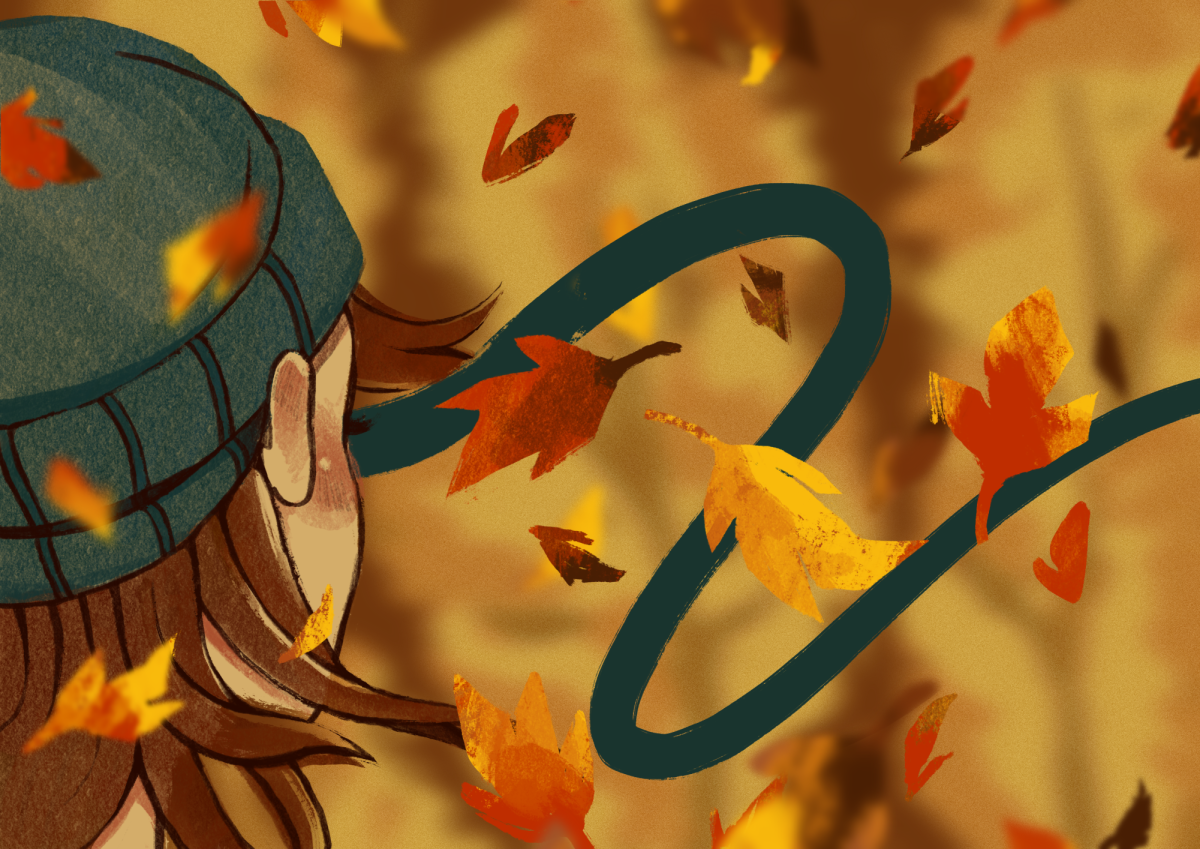Come this time of year, thousands celebrate the transition from summer to winter by dressing in oversized sweaters, baking apple-based treats and listening to what can be distinctly described as “fall music.” Upon looking up “Fall Playlist” on Spotify, artists including Phoebe Bridgers, Simon & Garfunkel, Fleetwood Mac and of course, Taylor Swift can be frequently seen across the top results. It’s obvious many find there’s a theme throughout these musicians’ works that represents the colors, scents and emotions of autumn, but what is that theme? The only way to solve that question is first to ask what fall sounds like.
Genre
Taking a closer look at the previously mentioned artists, all of them have created music that falls under the banner of the folk genre. Folk music is a diverse genre often described as sounding “rural” and rooted in tradition and culture. While different folk songs can have very different sounds, what wraps them in the same group is how they all represent the lives, struggles and experiences of communities and groups of people. Here is where the first connection appears as fall is a season not only defined by the drastic and beautiful changes seen in nature but also holidays for traditions and gatherings. Halloween, Oktoberfest, Thanksgiving and Día de los Muertos are all grand celebrations of family, community and culture, each with its own customs and practices. With this information, it can be said that fall sounds like tradition.
Instruments
With the instrumentation of “fall songs,” Arts Audio Producer Eugene Lyons pitched in with what patterns he had noticed while listening to a few of the playlists.
“When listening to any given autumn song, you’ll almost never hear more than the 4 essentials: bass, drums, guitar/keys, and vocals,” Lyons said. He notes a “sparsity” in each piece’s musical content, leading to songs that rarely change and keep to a singular “musical idea” at once.
“From the word go, these autumn playlists show you their chord content immediately, but all that means is that there are healthy dynamics to be found,” Lyons said. “Autumn music begins with a base such as an acoustic guitar and builds upon itself with instruments like sweeping synth pads or washed out guitars to build a soundscape of music. It’s really all about lingering in its emotions.”
Vocals
Eugene also mentioned how autumnal songs often place importance on their lead singer. With melodies that are slow and rarely steal attention, it falls on the vocal performance to capture the heart and emotion of the song.
“Any change to the music is much more noticeable,” Lyons said. “A small note change in a rock song that gets glossed over quickly would hit quite different in autumn music. Because of this, it allows the singer and what they’re saying to transform the song into their own personal story.”
Once again, we return to the idea that fall music is personal and representative of experiences held specifically by the artist. Autumn songs don’t wish to be “showy” rather they are pieces created for self-reflection.
History
While self-reflection is often associated with sadness or guilt, this is definitely not the case with the reflection found in Fall music.
“Autumn is typically presented in a very positive manner via music because it’s associated with things like the harvest and resting after the toil of the spring and summer,” said adjunct assistant professor Matthew Durrant, a member of the music theory area at the University of Utah’s School of Music. “It is also very beautiful because of the changing colors and relief from the heat.” Durrant cites a poem Antonio Vivaldi wrote for his Autumn Concerto from the Four Seasons as representative of this restful joy:
“The peasant celebrates with song and dance the harvest safely gathered in.
The cup of Bacchus flows freely, and many find their relief in deep slumber.
The singing and the dancing die away
as cooling breezes fan the pleasant air,
inviting all to sleep
without a care.
The hunters emerge at dawn,
ready for the chase,
with horns and dogs and cries.
Their quarry flees while they give chase.
Terrified and wounded, the prey struggles on,
but, harried, dies.”
Fall is a time when you quietly celebrate all of your hard work in the safety of home and familiarity. It’s this beautiful, colorful space between the brutal heat of summer and the harsh cold of winter where we can just be. This time is used to remember everything we’ve accomplished and how far we’ve come. Like the trees shedding their weight or the sun preparing for sleep, we use autumn to rest. That is what Fall sounds like.




